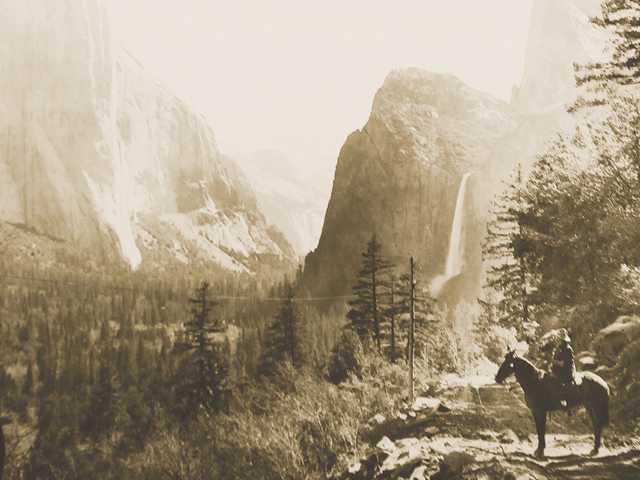Yosemite was a travel challenge at the turn of the 20th century.Just getting there on horse drawn stages or on horseback was tough enough let alone the thought of scaling El Capitan.A survey crew from Southern Pacific Railroad brought their wives along with their hats and long dresses to climb the mountain while the men had survey equipment and large cameras and tripods. Film was not the order of the day instead glass plates were created to use in wooden projectors. They also made 5x7 glass plates that turned out 5x7 inch contact prints of the nature they found along the trails.
YOSEMITE IN 1903
100 glass plate photographs capture beauty





